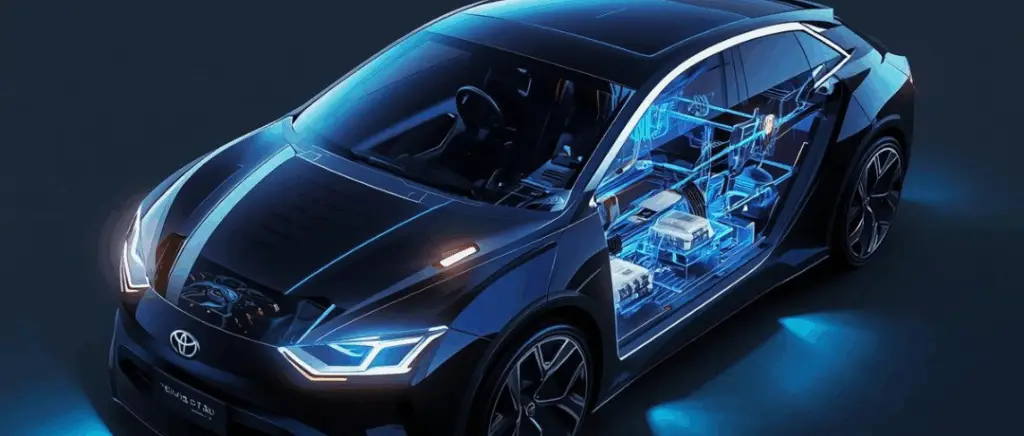Monday to Friday
9am - 12.30pm - 2pm - 7pm
L'autonomy of the electric vehicle
Why is the range of electric cars important for drivers?
Range is an important factor for drivers planning to make the ecological transition. With technological advances, manufacturers have succeeded in significantly increasing this range, making electric vehicles more attractive for everyday use and for longer journeys.
By 2024, most new electric car models will have a range of between 250 and 400 km per charge, with some top-of-the-range models achieving as much as 600 km thanks to more powerful batteries. This constant improvement in autonomy is crucial to meeting users' needs and reassuring those who are afraid of running out of power.
It is important to note that actual autonomy can vary according to a number of criteria:
- weather conditions,
- driving style
- speed
- heating
- air conditioning These different factors can reduce autonomy 10 to 30 %. For example, sporty driving or long journeys at high speed will consume more energy, reducing range.
Some of the best-performing models in terms of autonomy include the Hyundai Ioniq 6 with a range of 610 km. The Mercedes EQS 450+ can easily reach 700 km on a single charge according to the WLTP cycle. These vehicles are clear proof that electric cars can easily compete with combustion-powered vehicles.
They give users the freedom and flexibility they need for all kinds of journeys, from daily commutes to long journeys, without worrying about running out of charge.
Also read → 10 long-range electric cars
How can equipment maximise autonomy?
Various equipment and technologies built into vehicles play a crucial role in extending range, making electric cars more efficient.
Optimised heating and air conditioning
Heating and air conditioning systems are among the equipment with the greatest impact on range. Vehicles fitted with heat pumps consume significantly less energy for cabin conditioning than those using traditional heating systems. These systems can reduce range by 10 to 15 % in the worst case, a much lesser impact than many might fear. The latest models offer more efficient solutions for regulating temperature without sacrificing range.
Regenerative braking is a key technology that recovers the energy normally lost during braking or deceleration and converts it into electricity to recharge the car. battery. Different models of electric car offer a variety of energy recovery systems, ranging from systems with no adjustment to those offering several levels of recovery, allowing the intensity of recovery to be adapted to driving preferences. Some cars, such as the Nissan Leaf with its e-Pedal function and the Tesla Model 3These can even be used to come to a complete stop without using the brake pedal, maximising the energy recovered.
Advanced thermal management
Effective thermal management is essential to maintain the efficiency of electric batteries, especially in extreme temperature conditions. Sophisticated thermal management systems ensure that the battery operates within an optimum temperature range, improving range and battery life. These systems often use refrigerant- or liquid-based cooling circuits to regulate the temperature of the battery, electric motor and power electronics.
Energy-saving equipment
Other equipment, such as LED lighting, energy-efficient navigation systems and energy-saving control screens, also help to reduce energy consumption. Although the impact of these features on range is smaller than that of systems such as heating or regenerative braking, their overall contribution helps to optimise energy use and maximise range.
Also read → Electric car battery autonomy: where do we stand?
Recharging as a central element
Making recharging easier: a key challenge
Making it easier to charge electric cars is a key factor in encouraging their adoption and ensuring an optimum user experience. There are a number of different charging solutions.
- The standard domestic socket : Although possible, recharging via a standard household socket is the least efficient, with recharging times ranging from 10 to 20 hours for less than 50 kWhand much more for higher capacities.
- The reinforced socket : a faster option than the standard socket, offering safer and slightly faster recharging thanks to a higher capacity up to 3.2 kW.
- La Wallbox The most efficient solution for home recharging, considerably reducing recharging time. It offers charging capacities ranging from 3.7 kW to 22 kWwhich can be fully recharged in just a few hours.
Summary table
| Options de recharge | Puissance | Temps de recharge estimé | Coût d’installation |
|---|---|---|---|
Standard domestic socket | Up to 2.3 kW | 10-30+ hours | - |
Reinforced socket | Up to 3.2 kW | Moderate time reduction | Approximately €200 |
Wallbox | 3.7 - 22 kW | 2-5 hours for 50-70 kWh | 400 - 1 200 € + Installation |
Tips for recharging
Whichever option you choose, an installation by a IRVE-certified professional is mandatory to ensure safe and efficient recharging. We also recommend that you choose the power of the charging point carefully. It should correspond to the vehicle's actual recharging needs to avoid unnecessary costs.
Also read → How do you recharge your electric car?
What equipment and solutions are available for optimised recharging?
How can you optimise your top-up?
Fast-charging stations allow you to recharge a large part of your battery in just 30 minutes, with power ratings that can exceed 50 kW and reach up to 350 kW for ultra-fast stations.
Smart charging adapts vehicle charging to the lowest electricity tariffs, periods of low demand on the electricity grid, or times of high renewable energy production, reducing costs and environmental impact.
Vehicle-to-grid (V2G) systems make it possible not only to recharge electric vehicles, but also to use their batteries as a source of energy storage that can be fed back into the electricity grid, offering a new form of energy flexibility.
Many mobile applications such as Ionity or ChargePlug are available to help drivers find the nearest recharging station, plan their recharge based on their itinerary, and even pay for the recharge from their phone.
What are the advantages?
- Greater flexibility: smart charging and V2G offer greater flexibility by enabling vehicles to be recharged at the times that matter most.
- Accessibility: recharging management applications and services make it easier to access recharging stations and plan recharges efficiently.
- Supporting the integration of renewable energies: smart charging and V2G solutions are helping to better integrate renewable energies into the energy system.
Comfort: an argument in favour
An essential aspect of the user experience
Comfort in electric cars has greatly improved thanks to technological innovations that promise to further enhance the user experience.
Driver assistance technologies
Modern electric cars are equipped with advanced technologies such as automatic emergency braking, lane keeping and adaptive speed control, which not only increase safety but also enhance driving comfort. Models such as the Tesla Model S and the Ford Mustang Mach-E offer examples of these technologies, ensuring a safer and more relaxing driving experience.
Digital dashboards and touch screens
Large touchscreens are now a standard feature in electric vehicles, offering a multitude of functions from satellite navigation to Wi-Fi connectivity. These intuitive user interfaces give drivers easy access to information and controls, contributing to a more enjoyable and less distracting driving experience.
Driving silence
A notable feature of electric vehicles is their silent operation, due to the absence of an internal combustion engine and the low number of moving parts. This silence makes for a quieter driving environment and reduces fatigue on long journeys, although aerodynamic and road noise can become predominant at high speeds.
High-quality audio systems
To compensate for the low level of engine noise, manufacturers are equipping electric vehicles with advanced audio systems that offer a superior listening experience. Brands such as BMW and Hyundai integrate audio systems from renowned manufacturers such as Bang & Olufsen and BoseThis ensures an enriching acoustic experience for all passengers.
Are top-of-the-range electric cars really a guarantee of quality?
What defines a top-of-the-range electric car?
Top-of-the-range electric cars are defined by a combination of exceptional performance, elegant design and cutting-edge technology, aimed at delivering a superior driving experience. They are offered by brands renowned for their prestige, and are aimed at a demanding clientele who are looking not only for an electric vehicle, but also for status and a luxury experience.
These top-of-the-range models offer large-capacity batteries for extended range, powerful electric motors for rapid acceleration, and luxury equipment and finishes such as leather seats and advanced navigation systems. Their prices are significantly higher than those of standard electric cars, but they justify this difference by offering exceptional performance, functionality and comfort.
Here are some notable examples of top-of-the-range electric cars:
- Tesla Model S and Model Xwhich combine premium design, impressive range and advanced technology.
- Porsche Taycanrenowned for its blend of sporting performance and luxury.
- Audi e-TronIt offers a vast, comfortable interior space and innovative technologies such as virtual rear-view mirrors.
- Jaguar I-Pacea car that stands out for its dynamic driving style and remarkable interior and exterior design.
- Mercedes EQCoffering comfort and elegant design while asserting its premium positioning.
Also read → Top 7 luxury electric cars
The impact of high-end equipment on the user experience
Innovative technologies
Top-of-the-range electric cars incorporate advanced technologies such as state-of-the-art driver assistance systems, digital instrument panels and large touchscreens offering a host of connected functions. These technologies not only improve safety and ease of driving, they also transform the vehicle into a connected living space, where access to information, entertainment and environmental management are all at your fingertips.
Exceptional comfort
Interior comfort is another area where top-of-the-range equipment makes all the difference. Electrically adjustable leather seats with massage function, multi-zone climate control and a superior audio system are just some of the features that significantly enhance passenger comfort. What's more, the advanced acoustic insulation of top-of-the-range models ensures an exceptionally quiet cabin, amplifying the tranquillity of the electric driving experience.
Performance and autonomy
In terms of performance, top-of-the-range equipment such as larger-capacity batteries and more powerful engines offer not only greater range, but also faster acceleration and higher top speeds. These features, coupled with sophisticated suspension and steering systems, ensure a dynamic, responsive drive that meets the expectations of the most demanding drivers.
Design and aesthetics
The aesthetics are no exception, with elegant and distinctive exterior designs that turn heads, and luxuriously appointed interiors where every detail counts. High-quality materials, meticulous finishes and attention to visual and tactile details all contribute to an atmosphere of unrivalled luxury.
Also read → 10 innovations that promise to revolutionise electric car technology
Conclusion
Choosing the right equipment for your electric car is therefore essential to enhance the user experience. Range, charging options, safety and comfort are all essential criteria. Top-of-the-range models offer advanced performance and additional features that can make electric driving not only more practical but also more enjoyable. We therefore recommend that you align your choices with your specific needs to ensure that your electric vehicle meets your expectations. Ready to take the plunge? Contact our Beev experts if you have any questions. We'll get back to you within the hour.
































